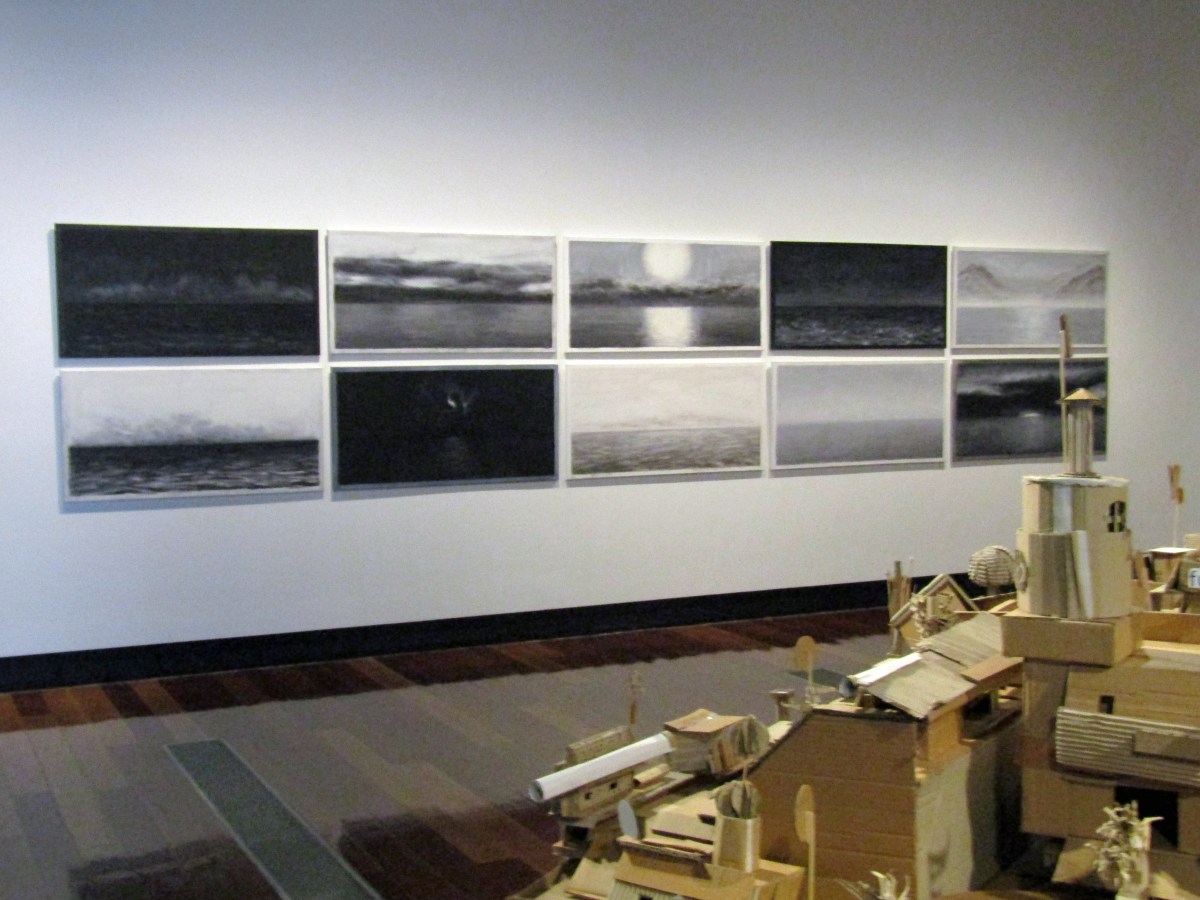The exhibition After Fairweather, at Caboolture Regional Gallery, explores the legacy of the artist Ian Fairweather, who lived out his years in a ‘Malay style’ thatched hut on nearby Bribie Island, not far from the gallery.
This fabled modernist maverick was a Scottish lieutenant who learnt to draw as a prisoner in Germany during the First World War. He was educated at the Slade School in London, and was collected by the Tate by the Second World War. He traversed pre-communist China to learn calligraphic drawing, and most remarkably, rafted from Darwin to Indonesia in 1952.
As well as the tallness of the tales, people of culturally and linguistically diverse backgrounds (CaLD) may question the continued reverence of this itinerant British painter, who appropriated aspects of both Asian and First Nation Australian cultures between the 1930s-1970s. It is for this audience that this investigation into the post-colonial implications of his artistic endeavours may hold the most interest.
The cavernous purpose-built exhibition space favours monumental sculptural intervention, which is delivered upon in the form of The Island (2022), a participatory artwork by the Filipino-born collaborative Isabel and Alfredo Aquilizan. Their inclusion reflects Fairweather’s residence in the Philippines and their artwork appears to reference his improvised vessel and dwelling.
Visitors are encouraged to add to the cardboard components of what would constitute a raft if set adrift, as much as an island as prescribed by its title. In this exhibition, it is floated atop glass bottles of the messaging variety. In addition to doors and windows, the existing ‘architecture’ includes the occasional chimney. The makeshift construction methods and materials speak to the resilience inextricable from the migrant experience.
Creating an atmosphere behind the installation, are a series of majestic monochromes titled Raft Journey 1-10 painted by Aaron Butt in 2020. The artist resides close to the site of Fairweather’s famed hut. Butt reflects upon Fairweather’s perilous journey through landscapes, which are by and large landless, but are nonetheless luminous and luscious.
The abstraction of forms could be read within the rhetoric of Chinese calligraphic painting. A poetic negation of colour and reduction in line was prescribed by the literati in the Song Dynasty and brought back to European audiences by Fairweather during the 1930s. This is with particular reference to Raft Journey 3, which appears to signal Fairweather’s arrival in Indonesia with mountains emerging from the ocean.
Accounts of Fairweather living in abject poverty in China would suggest that he favoured unfettered contact with the cultures he inculcated. Artist of Meriam Mir ancestry, Janice Peacock, problematises cultural appropriation and critiques the ‘collection and fetishisation’ of First Nation cultural artefacts through Culture Cult Plan (2001).
She offers an alternative ethnography through a series of quasi ceremonial objects, ranging from a headdress depicting a laptop computer to an ‘e-motion-stirrer’s dance rattle’. There is an authenticity imbued by the engagement of traditional techniques and materials from the Torres Strait, which is enhanced by the housing of the artefacts in antique display cabinets.
Among the accompanying documents cataloguing the contents are brass engraved plates quoting The Culture Cult: Designer Tribalism and Other Essays by anthropologist Roger Sandall. They serve to both expose the artifice of the exhibits and reveal the source of what may subsequently be read as satire.
There are numerous artworks worthy of mention in this exhibition, each exploring facets of the itinerant artist’s practice developed through sojourning in several countries including Japan, Borneo and India. While some perpetuate his myth and others critique his methods, all acknowledge his influence in the museum and gallery sectors of Western Europe and Australia from the 1930s onwards.
Read: Exhibition review: Parallel Landscapes, Bundanon
Although Fairweather’s seemingly insatiable incorporation of otherness may be frowned upon in the 2020s, his practice of appropriation served to whet the palettes of Australian art audiences for cultural diversity long before the advent of post-modernism, let alone post-colonialism.
Reflective of the broader Australian cultural landscape, in this exhibition Fairweather’s paintings provide a fulcrum from which the other artworks – by artists representing a multitude of cultures – may be understood.
After Fairweather is curated by Hamish Sawyer and other contributors not previously mentioned include: Archie Moore, Bridie Gillman, Chantal Fraser, Christopher Bassi, Laith McGregor, Lawrence Daws, Leyla Stevens, TV Moore, and Yuriyal Eric Bridgeman.
After Fairweather
Curated by Hamish Sawyer
Caboolture Regional Gallery, Queensland
Free
After Fairweather will be on display until 2 September 2022





